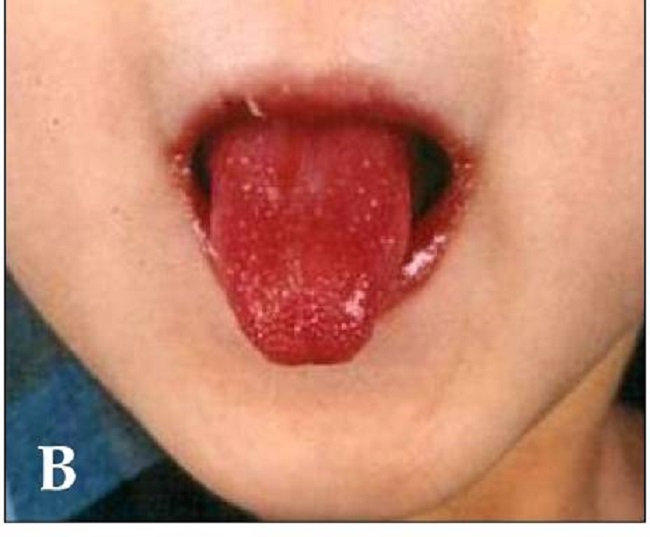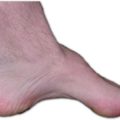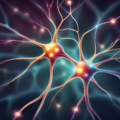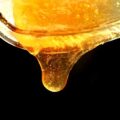Some years ago, I was confronted with a four-year-old girl as a patient. She had experienced repeated unexplained fever accompanied by a cough, sore throat, diarrhea, and croup. When she came to my attention she had an unusually severe episode of fever with an itchy rash, pain behind the knees and elbows, loss of appetite and abdominal pain. Her respirations were accelerated and the palms and soles were reddened and swollen. Her heart rate was 160 bpm and the blood pressure was 140/80, an extremely high blood pressure for a four-year old child. The laboratory changes were those that are generally associated with inflammation and there were changes in the electrocardiogram, indicating that the heart was affected. Chest X-rays chest showed inflammation in the lung. My interest in diet caused me to make specific inquiries and I found that she had been indulged with ad lib ingestion of sweets. I, therefore, requested the laboratory test known as red cell transketolase, a test for thiamine (vitamin B1) deficiency. It was strongly positive, clearly indicating deficiency of this vitamin. She was subjected to pharmacological doses of vitamin B1 to which she responded clinically.
Kawasaki Disease
The changes in the electrocardiogram, indicating some effect in the heart, the itchy rash and particularly the swollen and red palms and soles, suggested that the disease was a manifestation of that described by a Japanese doctor named Kawasaki in 1974. Today the condition is called Kawasaki Disease. Although it is now known to be associated with inflammation of blood vessels and is often characterized by incomplete and atypical forms, the cause of the disease is still a medical riddle that has eluded scientists for some 50 years. It is reportedly the most common cause of acquired pediatric heart disease in developed countries and the number of cases continues to rise in many parts of the world. In the United States it is estimated that there are 5 to 6 thousand new cases a year, but its true incidence may be unknown. It is also said to be increasing decade by decade in Japan, where there are 12,000 new cases a year.
Febrile Lymphadenopathy and Eosinophilic Esophagitis
The search for a cause in Kawasaki Disease is reminiscent of two cases in children that I encountered. They were both close to the age of six years and had had recurrent episodes of fever, sore throat and swollen glands in the neck, going on for several years. Would anybody in today’s concept of disease believe that it was due to something other than recurrent infection? Both of these children had been subjected to antibiotic treatment, in spite of the fact that there had never been any laboratory evidence of infection. One of the boys had been admitted to a prestigious hospital during a febrile episode and a lymph node in the neck had been removed. It was reported to be swollen, but with a normal structure. No previous questions had been asked concerning diet, but when this subject was addressed, it revealed that both children had been heavily indulged with sweets. Each had overt evidence of an abnormality in thiamine metabolism and no evidence of infection. One child was studied in detail and aside from laboratory evidence of thiamine deficiency he was found to have elevated levels of folate and vitamin B12 in the blood, both of which returned to the normal level when he was treated with thiamine, indicating the metabolic complexity that needed to be addressed. Both responded to pharmacologic doses of thiamine. The recurrent episodes ceased.
Another patient that I reported on this website was a 14-year-old boy whose symptoms for his first eight years of life were diagnosed as psychosomatic. Finally, at the age of eight, upper endoscopy had revealed eosinophilic esophagitis, an increasingly common disease throughout the world, marked inflammatory infiltration of the esophagus. He was addicted to sugar and his red cell transketolase test was highly abnormal, revealing severe thiamine deficiency. He responded clinically to pharmacologic doses of thiamine.
Discussion
We have three different conditions with widely varying symptoms, each nominated as a specific disease entity, but all coming under the umbrella of thiamine deficiency. At first sight this is so illogical in the light of our present understanding about disease that it would be considered a touch of madness. If, however, we look at it in a different light, it may begin to make sense. It is the cells in our bodies that cooperate to form a living person. Each cell has a vital responsibility within the group of similar cells that make up a given organ. I have used an orchestra as an analogy. Each instrumentalist knows exactly what he or she has to do in playing a Symphony. Each has to conform to the musical script and play according to the signals delivered from the conductor. If the conductor sends out the wrong signals, the performance could be a disaster. Conversely, if enough individuals in the first violin section or any other group of instrumentalists are absent or sick, the Symphony would also be a disaster.
To return to the subject of disease, the brain, particularly its lower part, is the conductor of the interplay between body organs and the brain that results in healthy action. It sends and receives signals from the body that enable us to function. A breakdown of energy metabolism in brain cells as depicted by thiamine deficiency, would create a chaotic distribution of signals to the body that might be likened to a breakdown of “the Symphony of Health”. Thiamine deficiency in the brain is exactly like being deprived of sufficient oxygen and it makes the “conductor” abnormally irritable. Some form of mild stress, such as a rapid change in environmental temperature gives a false impression that the subject is being attacked and it orders a full defensive reaction exactly like that initiated by the attack of a microorganism. In a sense, we might describe the whole thing as a “delusion” perpetrated by a sick brain driving the body to defend itself against a ghost.
We have known now for a long time that sugar is a dangerous substance that results in different manifestations of disease. We have also known from experiments that were done by Sir Rudolph Peters in Cambridge in 1936 that adding glucose to live pigeon brain cells caused these cells to start respiration (using oxygen). If those cells had been made thiamine deficient experimentally there was no respiration. Peters called this the catatorulin effect that shows how dangerous it is to take sugar in the presence of cellular thiamine deficiency. Is the explosion in these diseases seen in children a reflection of their being indulged with sweets, often starting in infancy?
We Need Your Help
More people than ever are reading Hormones Matter, a testament to the need for independent voices in health and medicine. We are not funded and accept limited advertising. Unlike many health sites, we don’t force you to purchase a subscription. We believe health information should be open to all. If you read Hormones Matter, like it, please help support it. Contribute now.
Yes, I would like to support Hormones Matter.
Image credit: Kawasaki_symptoms.jpg: Dong Soo Kimderivative work: Natr, CC BY 2.0
















Many years ago, I had a child with what I took to be Kawasaki disease. She appeared to be helped with vitamin therapy. There have been recent reports in Pub Med that critical illness has been associated with thiamine deficiency. It appears to be precipitated by the stress of the illness and seems go be an attack on mitochondria. A 100 mg injection of thiamine cannot do harm and might be therapeutic. Marik et al have treated patients with sepsis successfully with I/V hydrocortisone, vitamin C and thiamine so there is some precedent
A case in NY linked below showed this kid whose symptoms were like Kawasaki Disease had tested for Covid-19 and shown to have the antibodies though it was not active when the kid was sick with this Kawasaki-like disease. I wonder, why him? What set him up for this disease?
https://www.facebook.com/163636850322278/posts/3194241800595086/